We received a freak snow in April this year.
When I got in my car to head to work that morning, I noticed that my low tire pressure light was on.
Dammit. Why do I always end up airing my tires in the cold?
See Related: My Favorite 12v Air Pumps That Operate Off A Cigarette Plug
ProTip: I get my oil changed at the dealership. It costs me $10 extra, but they check all of my fluids and air up my tires. Also, I buy my tires at a local repair shop, so if the TPMS light comes on while I’m at work, the wife can run the car by there to have one of the mechanics top it off.
How far can you drive with low tire pressure? If you don’t have an entirely flat tire, I try to limit my driving to under 10 miles to ensure safety to myself and my car. I also avoid high speeds.
Driving long distance with the TPMS light on is a bad idea.
In a hurry? Quick Links:
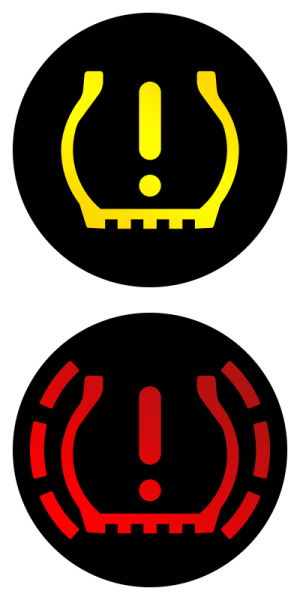
Is It Safe To Drive With Low Tire Pressure?
Most cars these days (at least those built after 2007) have a tire pressure monitoring system (TPMS).
When the orange tire pressure warning light with an exclamation point inside it comes on, it’s time to visit the tire shop.
According to data from the Federal Motor Carrier Safety Administration (FMCSA): “Properly maintained and performing tires aid drivers in preventing and mitigating crash situations.”
I found supporting data in a report from the National Highway Traffic Safety Administration (NHTSA) which states underinflated tires are 3 times more likely to be cited as the cause of a crash when they are 25% under recommended PSI.
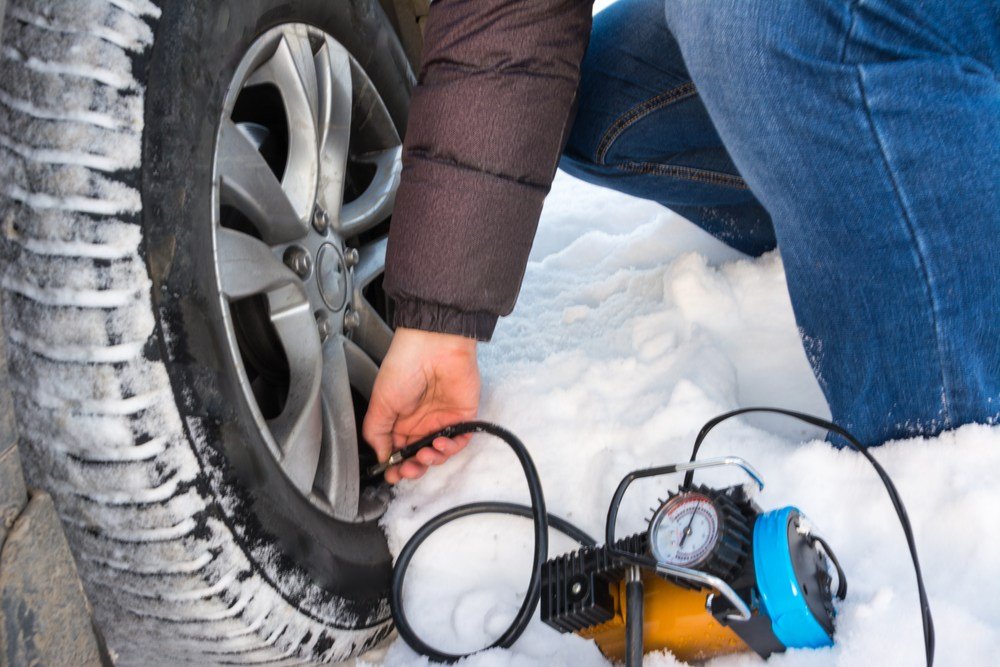
How Low Does The Pressure Need To Be For The TPMS To Come On?
Most TPMS systems will illuminate somewhere around this 25% mark. What is incredible about this is that, previously, most drivers would only notice a low tire when it affected handling. In my experience, this is around the 50% mark.
By the time the tire is that low, the driver is at huge risk and the tire has experienced damage from driving in an under-inflated state.
Some vehicles will show a message or icon to indicate low tire pressure, but won’t indicate which tire is low. You’ll need to use a tire pressure gauge to check all tires.
We are now seeing more detail in the TPMS readouts. Both my Honda Pilot and my Ford Expedition show me which tire is low.
Why You Should Not Drive With Low Tire Pressure
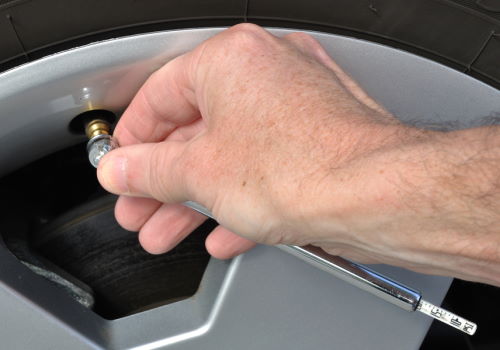
Three reasons: fuel economy, damage to the tire and a higher risk of an accident.
According to the NHTSA, 738 people died in tire-related auto accidents in 2017 https://www.nhtsa.gov/equipment/tires. Another often-cited number is that 11,000 accidents happen every year from improperly inflated tires. (If you see a source on this one, mention it in the comments, I wasn’t able to confirm.)
Your tires are the only thing between you and the road. If they don’t stop quickly — especially in wet weather — you are at a higher risk of a deadly crash.
The second major point is how much damage underinflation causes to your tires. Edgewear on the outer edge of your tread (or even on the sidewalls) is indicative of a tire that has been habitually driven while underinflated.
Sidewall wear can also increase your risk of a catastrophic tire blowout while driving. The last thing you need is tire failure out at 60 miles per hour.
Underinflation reduces tire life.
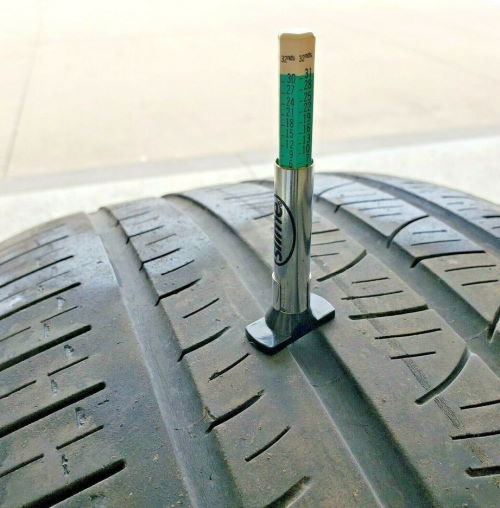
I just recently priced tires for my Honda Pilot. The cheapest brand is going to cost me $500 for new tires. If that isn’t an incentive to keep them inflated, I don’t know what is.
Finally, there is a longstanding and well-studied correlation between tires with low air pressure and a decrease in fuel economy. According to FuelEconomy.gov, you have a .2% decrease in fuel economy for each 1 PSI drop in air pressure.
Want me to do the math for you? When your TPMS light is lit, you are experiencing a decrease of at least 1.5% in gas mileage.
Proper tire inflation creates better fuel efficiency.
How Soon Should You Air Up Your Tires When The Low-Pressure Light Comes On?
That Day.
Immediately when the light comes on, visually inspect the tire. If it is low and not flat, you can probably make it to work.
If the tire is significantly flat, you risk causing damage to the wheel (or rim), since the tire cannot cushion it.
However, you must fix it as soon as possible. I have a couple of gas stations on my way to work that I will stop at to reinflate my tires.
You can also stop at any tire shop. They will inflate your tires, check tread depth and inspect the tires for foreign debris causing a flat. Often this is a 5 minute stop that is entirely free (I’m constantly impressed with how professional and friendly my local Discount Tire is).
What Is Low Tire Pressure?
Low Tire Pressure is determined by your owner’s manual.
Most passenger vehicles are going to have a recommended tire pressure of 32 to 35 pounds per square inch (PSI). If the levels drop by 25% the warning light illuminates.
So 24 PSI would definitely be too low and increases your risk of an accident.
What Causes Low Tire Pressure?
In most cases, there is an underlying reason for the low pressure.
- Valve Stem Leak: The rubber seal inside of the valve stem can develop a slow leak. Putting a little soapy water around the outside and on the tip of the stem can sometimes reveal a slow leak when bubbles appear.
- Tire Wear: If you have severely worn tires, they won’t hold air as well. Check the tires — including the inside sidewalls — closely for thin spots, exposed metal wire or visible dry rot and cracking.
- Nail In Tire: I am constantly amazed at how many nails I get in my tires. Part of that is from how many job sites I am at. Sometimes foreign debris in tires will create a slow leak. I’ve learned to keep my spare tire inflated and ready to go.
- Cold Weather: When the temperature drops, the pressure drops inside of the tire due to the contraction of the air molecules. This will turn the TPMS light on. Sometimes the TPMS light will go off once you’ve heated the tire by driving it. You still want to stop and fill up the tires.
Tires will always lose a little bit of air over time. You want to top them off 4 times a year.
What Is The Recommended Tire Pressure?
Your owner’s manual will have guidelines for the proper pressure listed inside of it. There is also a sticker on the inside of the driver’s door.
(I find it easiest to reference the door jamb sticker).
If for some reason, you don’t have either of those two resources, the tire will have a maximum pressure printed on the sidewall that you can inflate to.
Don’t Rely on TPMS
Computers and sensors are handy, but they sometimes fail. The downside is that they can make us lazy.
Your grandfather’s system to check tire pressure 4 times a year with a tire pressure gauge was an extremely smart system.
Take the little valve stem cap off and press the tire pressure gauge firmly onto it. The pressure level will be measured by the gauge.
For myself, I make sure the shop checks tire pressure during every oil change. I also rotate my tires regularly.
And, since Grandpa raised me right, I keep a cheap gauge in each glovebox.
Replace Your TPMS
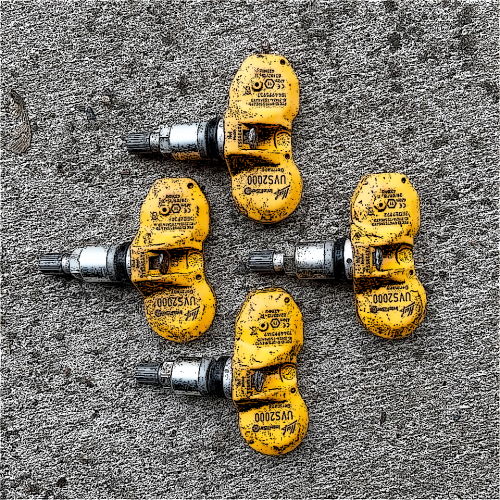
TPMS sensors have come down in price. The battery is sealed inside, and when it dies, the entire unit needs to be replaced.
A TPMS sensor will generally last for 5-10 years or 100,000 miles. This means that they need to be replaced on about every second tire change (since most tires last around 60,000-70,000 miles).
I’ve had good luck with my sensors and probably change them less often than I should. My Honda has a second TPMS warning light that illuminates when a sensor dies or is not calibrated properly.
 Skip to content
Skip to content

